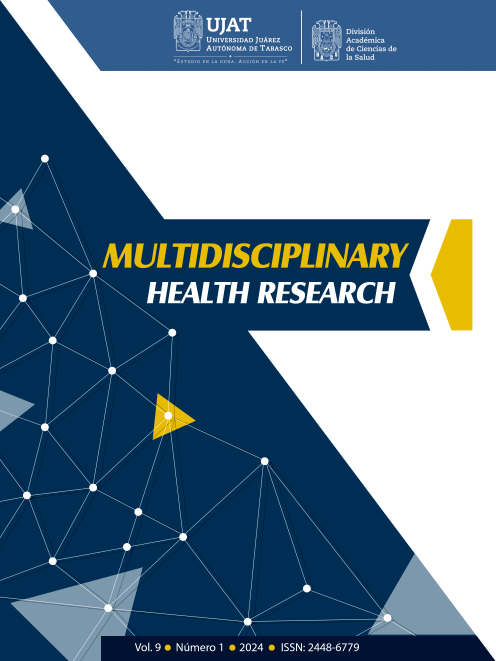HOSTILE PARADISE: MOBBING IN A RESORT HOTEL IN VILLAHERMOSA, TABASCO
DOI:
https://doi.org/10.19136/mjhf6r544meqKeywords:
Work Psychology, Hostility, Conflicts, Mobbing, Business, Work psychology, Hostility, Conflicts, Mobbing, BusinessAbstract
A hostile work environment is characterized by intimidation, discrimination and harassment, and negatively impacts the well-being and performance of workers. Organizational culture significantly influences the management of workplace harassment, where rigid hierarchical structures and unhealthy internal relationships can facilitate the emergence of mobbing. In a mixed study conducted at a hotel resort in Villahermosa, Tabasco, the “Unified Labor Questionnaire” (ULQ) was applied to 69 employees to assess workplace safety, work environment, organizational culture and the presence of mobbing. The results showed that the hotel's organizational culture allows or ignores mobbing, which creates a climate of fear and abuse that seriously affects employees. Hierarchical rigidity, excessive competition and lack of communication and support from leaders perpetuate this cycle of workplace violence. To counteract this situation, interventions are recommended where organizations adopt zero tolerance policies for harassment, establish confidential communication channels and promote an environment of respect and collaboration. These measures foster a resilient and healthy organizational culture, which not only prevents mobbing, but also strengthens employee well-being and performance in a safe and sustainable environment.
References
Campbell, C., & Neill, J. (2022). Organizational culture and workplace climate: Implications for managing hostility in the workplace. Journal of Management Studies, 59(4), 674-692. https://doi.org/10.1111/joms.12735
Díaz, M. (2020). Estrategias para prevenir el acoso laboral en empresas mexicanas. Revista Mexicana de Psicología del Trabajo, 6(2), 105-120.
Dries, E. G., Van der Heijden, H. T. M., & Peters, E. C. J. C. K. (2021). Building organizational resilience to mitigate workplace hostility. Journal of Organizational Behavior, 42(3), 256-272. https://doi.org/10.1002/job.2521
Einarsen, S., Hoel, H., Zapf, D., & Cooper, C. L. (2021). Bullying and harassment in the workplace: Developments in theory, research, and practice. CRC Press.
Hernández, M. (2021). Cultura organizacional y su relación con el acoso laboral. Cultura y Trabajo, 18(1), 77-92.
Hershcovis, M. S., & Reich, T. (2023). Understanding and preventing workplace aggression: A research-based approach. Springer.
Martínez, C. (2021). Impacto del ambiente laboral hostil en el desempeño de los empleados. Desarrollo Organizacional, 20(1), 65-80.
Namie, G., & Namie, R. (2024). The bully-free workplace: A strategic guide to the prevention and management of workplace bullying. Wiley.
Patel, A. J., & Hossain, M. I. (2023). Prevalence and impact of workplace bullying in private sector organizations. Human Resource Management Review, 33(2), 235-249. https://doi.org/10.1016/j.hrmr.2022.100822
Pérez, F. (2020). Evaluación de la efectividad de políticas contra el acoso laboral. Administración y Empresas, 10(4), 205-220.
Rayner, C., & Cooper, C. L. (2022). Managing workplace bullying: The role of management and organizational culture. Palgrave Macmillan.
Salin, D. (2020). Workplace bullying: A study of antecedents and consequences. Routledge.
González, J. (2020). Factores que contribuyen a un ambiente laboral hostil en las organizaciones. Psicología y Empresa, 15(1), 55-70.
González, J., & Martínez, R. (2021). Políticas efectivas para combatir el mobbing en el lugar de trabajo. Revista de Recursos Humanos, 9(4), 215-230.
González, M., Pérez, A., & López, R. (2020). Impacto de un ambiente laboral positivo en la productividad organizacional. Revista de Psicología Organizacional, 15(3), 45-60.
Secretaría del Trabajo y Previsión Social. (2019). NOM-035-STPS-2018. Factores de riesgo psicosocial en el trabajo - Identificación, análisis y prevención. Diario Oficial de la Federación.
Published
Issue
Section
License
Copyright (c) 2024 Author(s) & Multidisciplinary Health Research

This work is licensed under a Creative Commons Attribution-NonCommercial 4.0 International License.


